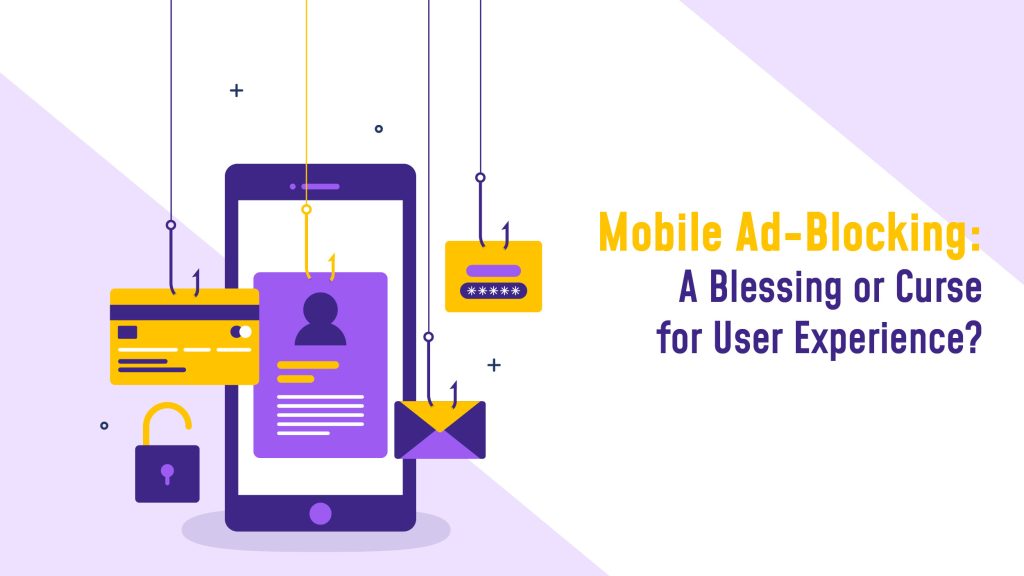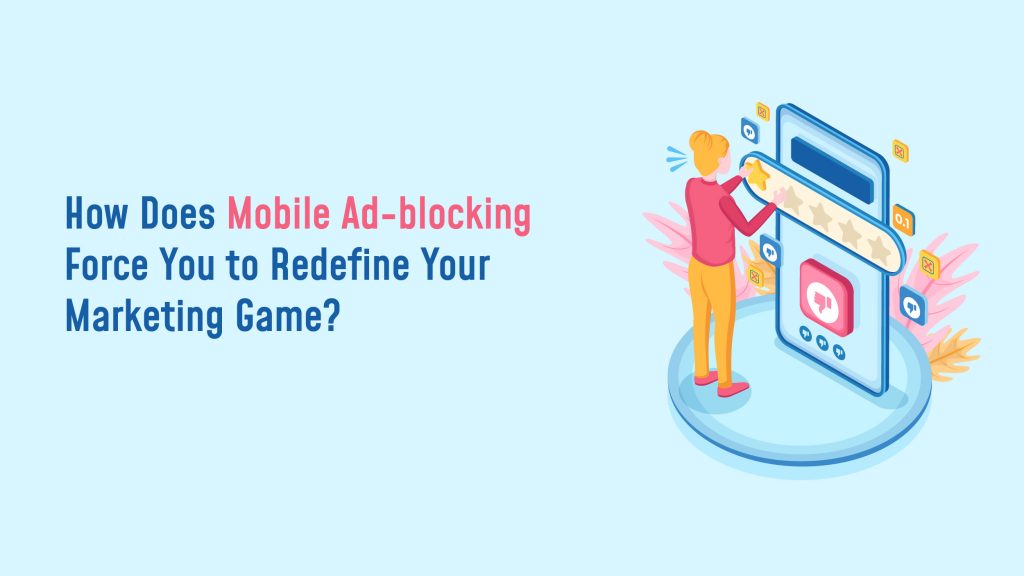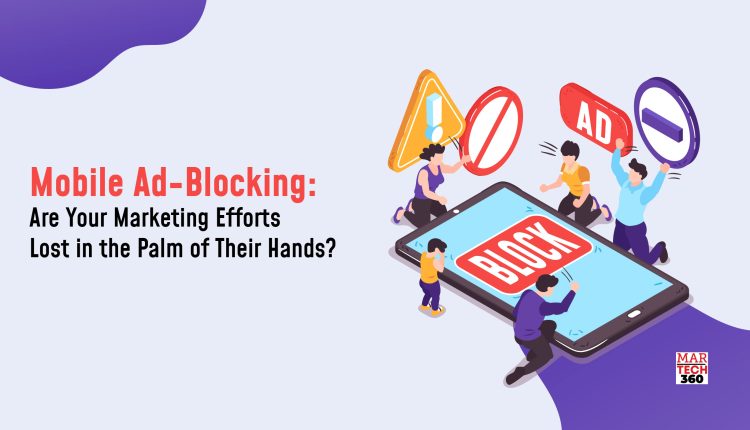One method for consumers to reject (some) ads is through the usage of ad blockers. This, by definition, has a detrimental effect on marketers’ profits. Is it the whole story, though?
There have always been techniques to avoid advertising, such as muting or skipping TV (or YouTube) commercials, or turning the page while reading a newspaper ad. But in the larger context of the internet, ad blockers have a significant impact.
To Block or Not to Block? The Usage of Mobile Ad-Blocking
A worldwide average of 42% of users employ some sort of ad blocking. Additionally, 27% of users on PCs, mobile devices, and tablets block ads.
One of the most widely used mobile ad-blocking extensions, AdBlock, claims to have 65 million active users.
The capabilities and cutoff points for what constitutes “block-worthy” content varied among the various tools. As a result, the effects on consumers, content creators, and marketers differ.
The Inner Workings of Mobile Ad-Blocking Software
We must first comprehend how ad blockers operate before we can assess how they affect your marketing efforts.
Mobile ad-blocking cannot be done using a single method. A diverse set of things are blocked by each ad blocker. All ad forms could be the target of very active blockers. Others that are more lenient might merely stop pop-ups.
The items they are attempting to prevent, however, share a few bits of source code that all of them pick up on.
One such instance is the detection of JavaScript (JS) by aggressive ad blockers. Richer ad forms, like interactive advertisements, pop-up windows, and movies, frequently incorporate JS. The interactivity of the content itself is powered by JS, which is another area where issues could arise (no pun intended).
Mobile Ad-Blocking: A Blessing or Curse for User Experience?
One of the most frequently cited justifications for adopting mobile ad-blocking software is that ads are obtrusive, pointless, or too frequent. One of the primary reasons for using such software, according to blockers, is advertisements interfering with the content users are attempting to access.
Most of the time, removing intrusive ads enhances the user’s experience on the website.

Some ad blockers, nevertheless, don’t add anything to the space where the blocked ads were, leaving significant content gaps.
Some content providers have complained about missing buttons and call to action, which can also negatively affect website UX. Some websites utilize JavaScript to display crucial content to viewers. If you’re one of them, a lot of your content might not be seen by users using aggressive ad blockers. A poor user experience and a higher bounce rate could result from employing JS for elements like your navigation.
JavaScript is also ignored by Google while crawling websites. Thus, when crawling the page, GoogleBot also sees what is shown in the screenshot on the right.
Google can’t see anything that requires JavaScript in order to display. Most of the links on this page won’t function if JS is disabled, making them practically invisible. Google probably won’t like what they see, as you can imagine. The effects on SEO efficiency may be fatal.
One of the main reasons you should never utilize JS for crucial portions of your website is the widespread use of ad blockers.
Google vs. Mobile Ad-Blocking: Clash of Titans in the Digital Arena?
As Google is a participant in the Acceptable Ads program, advertising on Google Ads is largely unaffected. By adding Google’s advertising to a whitelist, some of the most well-liked mobile ad-blocking software will begin to show them.
Users can still choose to leave manually, though. They can disable whitelisted websites with several ad blockers. After that, search and display adverts will be blocked, including those on Facebook and YouTube.
Globally and in the UK, Google Chrome has the largest market share among browsers. Google, therefore, has some indirect control over the development of certain of these extensions.
For instance, starting on January 17, 2022, Google’s Manifest V2 extensions will no longer function within the Chrome Web Store. This affects the underlying code that a significant portion of the existing ad blockers run on. A higher emphasis on security will be present in the new V3 extensions. They also limit who has access to private information.
According to reports, this shift will compel mobile ad-blocking software to modify and update. Google claims that “this change is intended to provide developers with a way to create safer and more effective ad blockers.” However, the tactic is generally regarded as an attack on the least capable blockers.
How Does Mobile Ad-blocking Force You to Redefine Your Marketing Game?
Mobile ad-blocking by default only blocks advertisements that interfere with the user experience. The majority of display advertising is affected by ad blockers, but it is only one aspect of the problem.
Mobile ad-blocking has the potential to increase the effectiveness of the advertising industry. Users who don’t want to see advertisements and aren’t likely to convert get removed from the system.
Ad blocks, however, will cut down on the amount of money that advertisers spend on ads when trying to reach new audiences with display marketing. Depending on their size and sector, different advertisers will see varying effects. While there may be more competition for ad spaces, better targeting can also result in lower cost per lead.
As more marketers contend for fewer locations and advertising formats as a result of ad blockers, CPCs increase. It’s critical to make an impression on your target audience. Any firm trying to advertise through many platforms without irritating its audience must pay more attention to measuring ad fatigue.
Ad-blocking, however, is probably going to have very little of an effect on inbound marketing. Ad filters do not specifically damage organic or direct traffic. Contrarily, owned and organic traffic becomes even more dependable.

Ad-blocking increases the volume of organic traffic as well. When users are unhappy with the experience provided by advertisements, they will switch to organic placements.
Ad blocker adoption is rising, and that, together with cookie and iOS upgrades, will probably lead to a greater emphasis on inbound marketing. Ad blocking causes two significant changes in digital marketing:
- A larger demand for owned content that doesn’t trigger ads to increase organic traffic to your website.
- Improved targeting, creatives, and messaging are required for paid campaigns.
Your strategy should be centered around the user’s intent, regardless of where they are in your buying funnel.
A Glimpse Into the Future of Mobile Ad-blocking
Websites are increasingly limiting access to content to visitors who have ad-blocking software installed. Online content publishers, including GQ, the Telegraph, and Forbes, have adopted a stance asking readers to disable ad blockers in order to access the content.
An important part of what’s posted on the web is supported by advertising. Therefore, ads will continue to influence how Google and the internet as a whole develop over time.
The continued development of ad blockers, platform privacy-focused improvements, and cookie limitations will continue to create headlines. Advertisers, users, and content creators will all continue to be impacted by ad blockers.
It is essential for marketers to know the effect on ad spend, revenue, and competition. The emergence of ad blockers has made four of your top priorities more crucial than ever, therefore it’s time to act:
- The evaluation of ad blocking’s effects.
- Getting good organic rankings and decreasing reliance on advertising.
- Establishing cookie-free tracking and generating first-party data.
- Enhancing your users’ exposure to advertisements across all media. Deliver creative and consistent messages across many touch points.


Comments are closed.